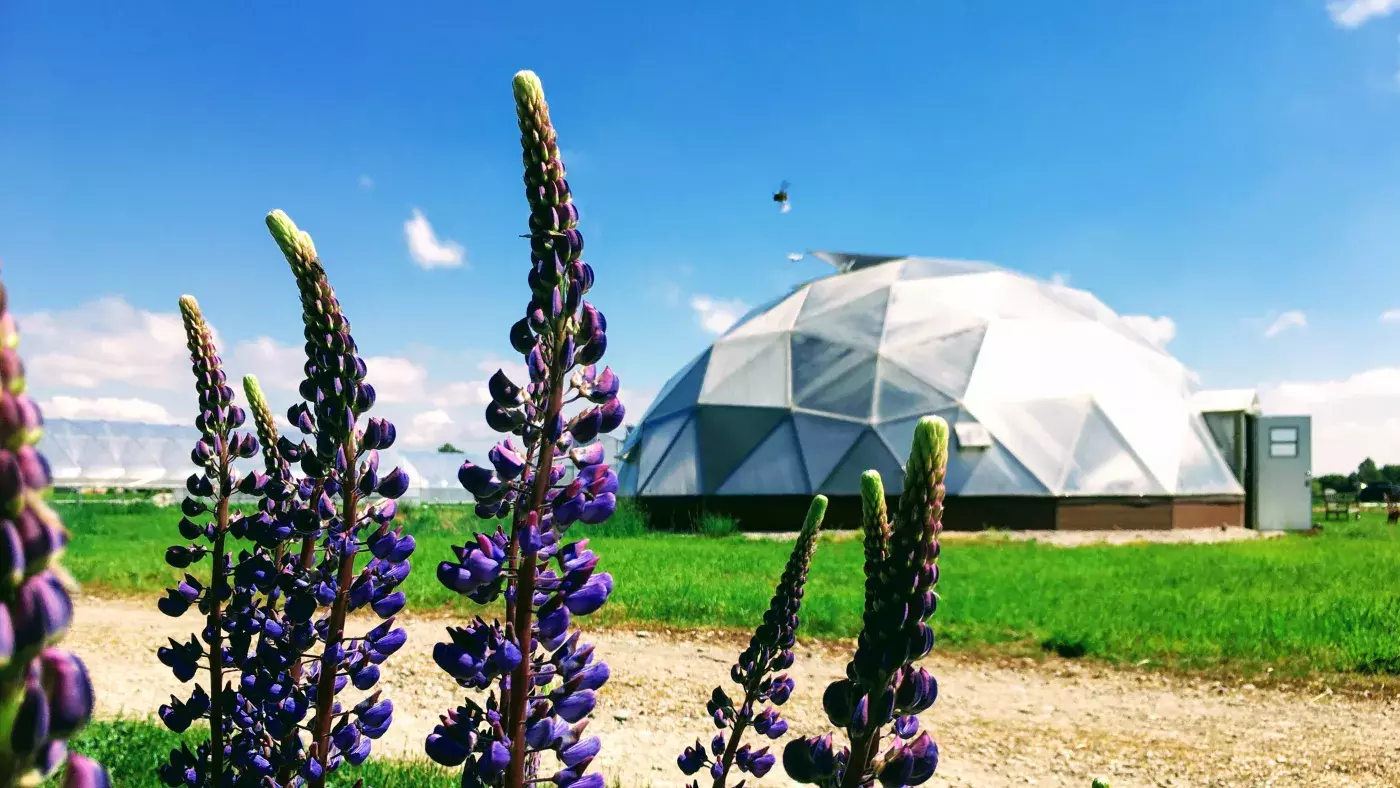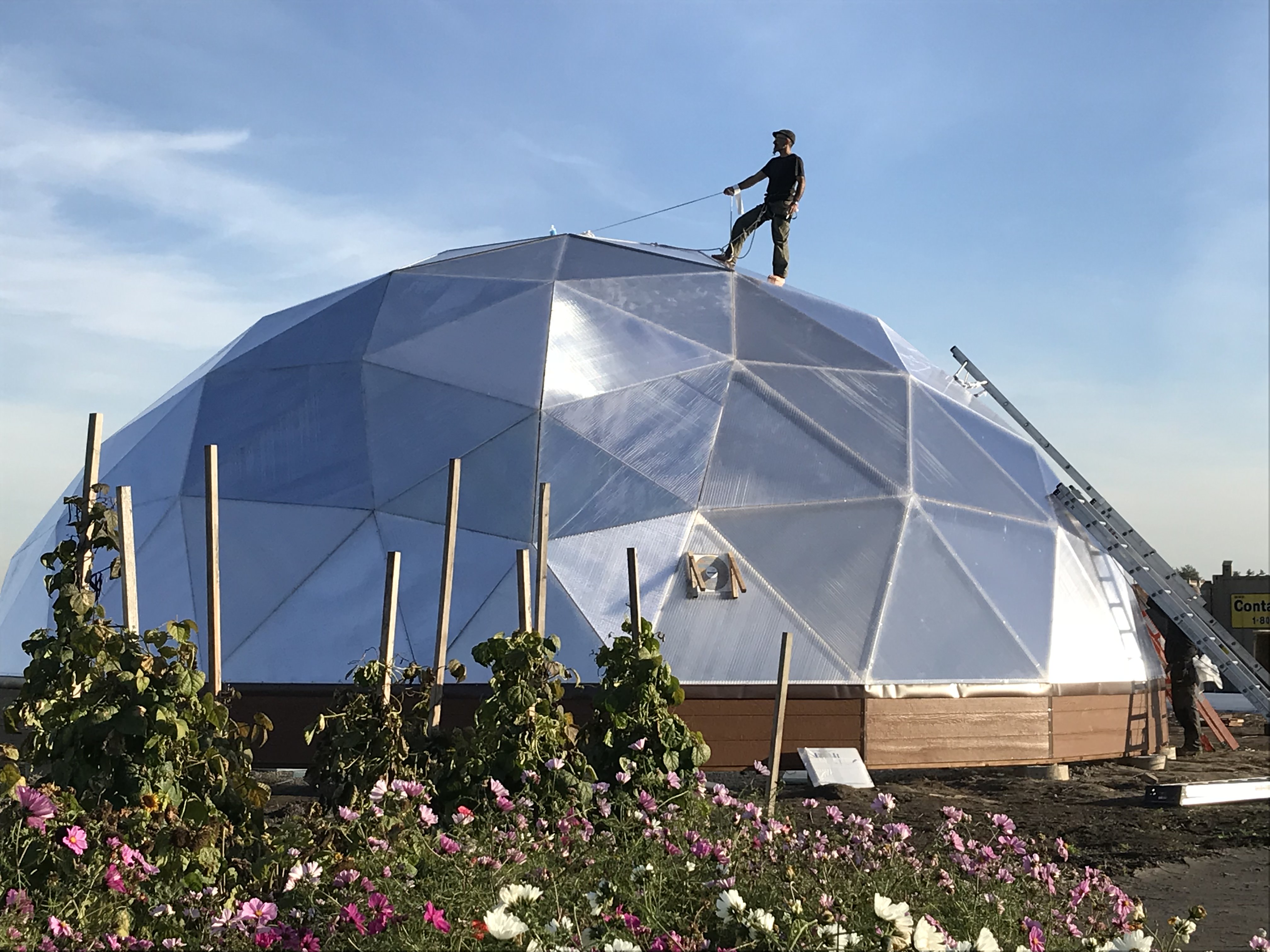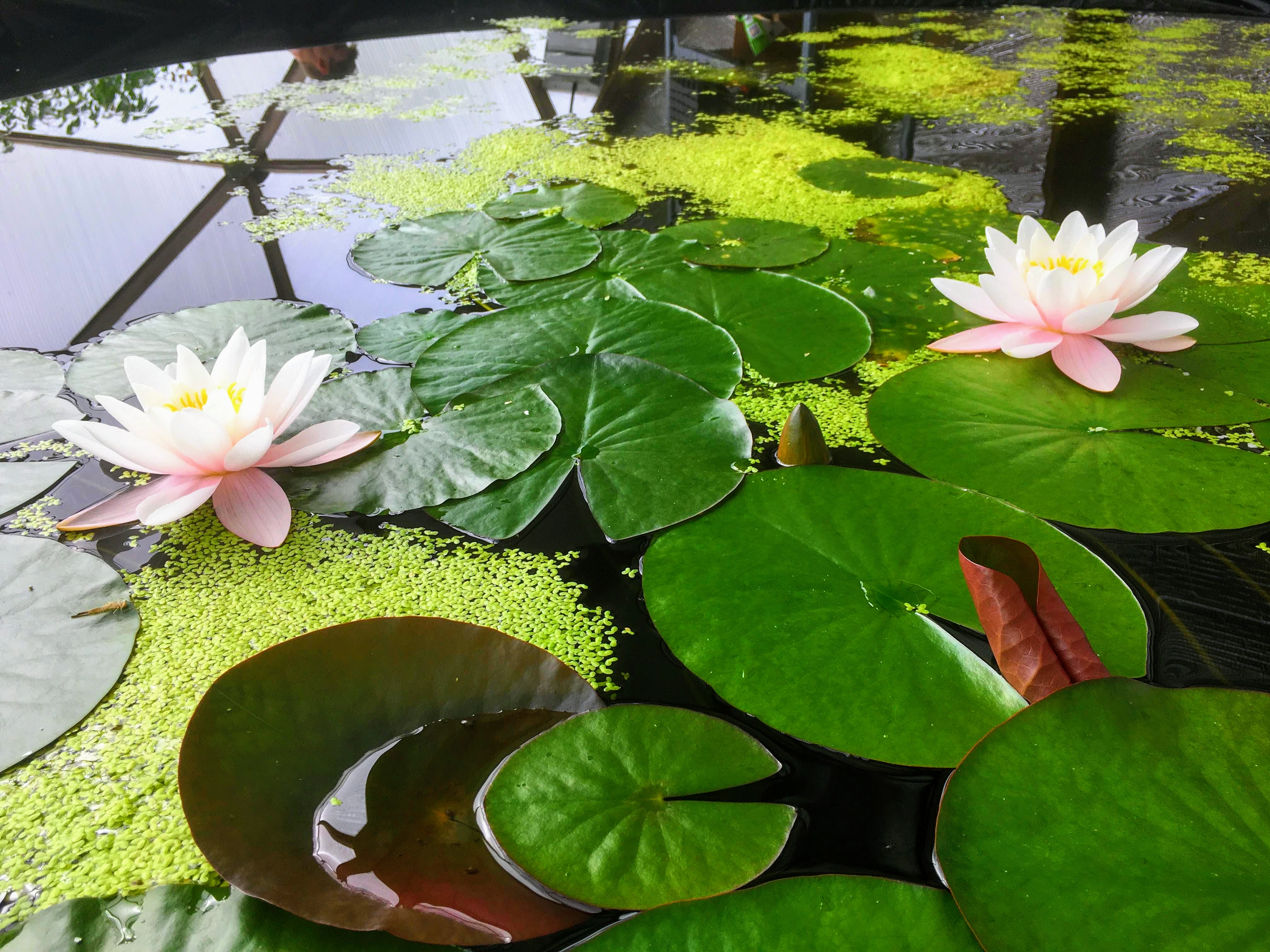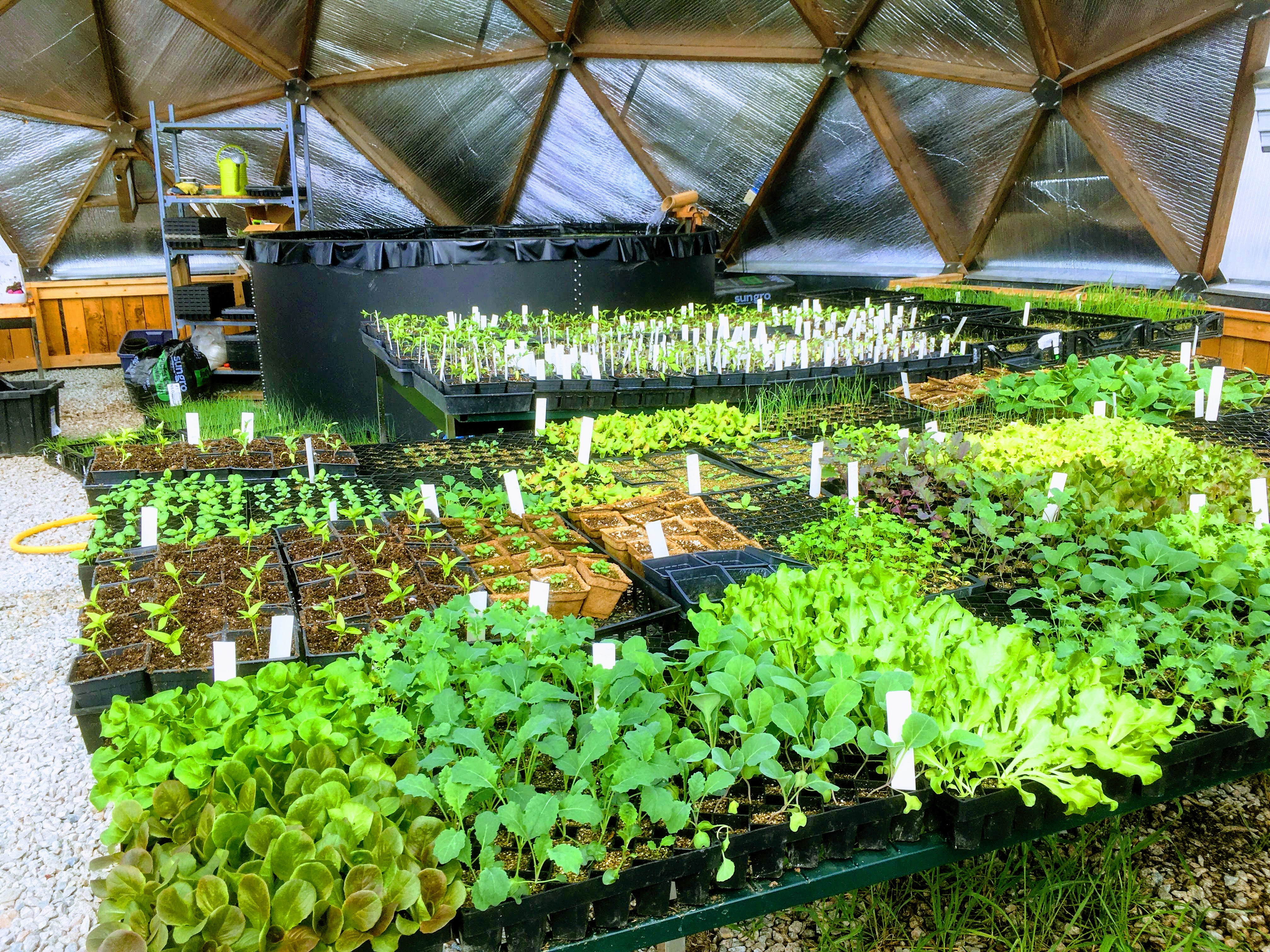

A passive-solar dome greenhouse enables early transplant production without burning fuel for heat
Solar Growing Dome
Vegetable transplants for the KPU Farm at the Garden City Lands are produced in a solar greenhouse, which allows seeding to begin in winter without burning fuel for heat.
| The greenhouse is a 13 m diameter dome, built from a kit in October 2018 (kit available from Canadian and US-based suppliers). | Image
|
| The greenhouse is designed to operate off-grid. Its dome shape reduces surface area (and associated heat loss) by about 40% relative to a standard rectangular greenhouse enclosing the same area. | Image
|
| It is glazed with translucent, multi-walled polycarbonate panels (72% light transmission, R3 insulation value). The panels are much stronger than glass, allowing the structure to withstand stronger winds and heavier snow loads than are ever expected at the site. | Image

|
| The north-facing quarter of the dome is opaque, due to additional fiberglass insulation with a silver backing, intended to reflect solar radiation into an 8,500 L pond that serves as a heat sink to stabilize interior temperatures. | Image
|
| The dome sits on a 1 m insulated wall with framed raised beds around most of the interior. Earth tubes (air pipes) with solar-powered fans draw air from the north to the south of the dome, through the soil of the raised beds. | Image
|
| Solar-powered fans attached to a thermostat draw cool outside air into the dome when the interior air temperature exceeds a set threshold. Three large air vents at the top of the structure are attached to wax-filled cylinders, which open and close the vents automatically due to thermal expansion and contraction of the wax. | Image
|
| Early season germination occurs in a chamber constructed of a re-purposed commercial refrigerator with glass doors, heated by a water-filled electric slow cooker on a thermostat. Trays of germinated seeds are then placed on a table covered with electric heat mats. Both of these grid-tied electric heating devices allow targeted warming of small volumes of soil and air, instead of warming the entire enclosed volume of the greenhouse. | Image
|
Seeding typically begins in late January, and the greenhouse is full of transplants between February and June.
Image
| In summer and fall, the greenhouse provides a warm and dry space for curing farm products, such as garlic, storage onions, sweet potatoes, dried herbs, and winter squash. | Image
|
The greenhouse also offers a unique and versatile gathering space for classes, workshops, and meetings.
Image
Image

|
Image
|
Image

|
Image